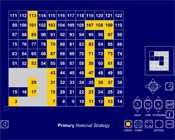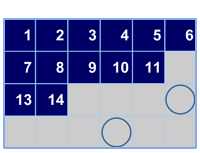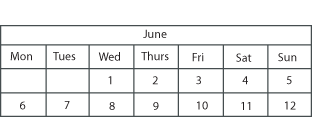Consolidation and practice
These resources are to support children in guided or independent work. Roll over the highlighted resource for a description.
Number grid

This interactive teaching program (ITP) is an ICT-based tool to support the exploration of number, reasoning and problem solving. Number grid ITP allows the child or teacher to generate a number grid with different starting numbers, orientations and numbers of columns. Individual numbers or chosen multiples can be coloured and numbers masked to explore number sequences and patterns and develop children's ability to predict and generalise.
Opportunities to use and apply
Possible contexts include:
- number problems and puzzles, e.g. Arrange these digit cards to make three-digit odd numbers.

How many can you make? Explain your reasoning.
- patterns and sequences, e.g. Work out what numbers should go in the circles. Explain how you know.

- measures, e.g. Give the children a cup and a measuring cylinder. Ask: 'How many cups could be filled from a 1-litre bottle of water? Explain how you solve this problem, recording each step of your working.'
Confirming learning
Ask probing questions such as:
- 60p can be made using two different coins (one 50p piece and one 10p piece). Find all the possible amounts that can be made, using two different coins. How do you know you have found all possibilities?
- Patrick and Andrew buy their dad a present that costs 90p. Andrew pays 10p more than Patrick. How much do they pay each? Explain how you reached your solution.
- This is the beginning of a calendar for June. What will be the date of the last Saturday in June? How did you work this out?


 Calculating
Calculating



